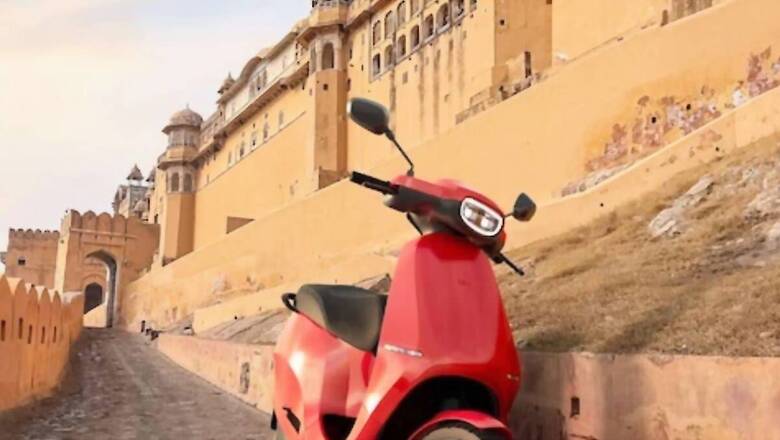
views
As the Ministry of Heavy Industries, in its recent notification, modified the FAME India Phase II scheme, industry insiders said rise in prices of electric two-wheelers may be a challenging factor, but it will also give the EV players an opportunity to shape a sustainable future for mobility.
The ministry has dropped the subsidy on electric two-wheelers to Rs 10,000 per kWh, from the existing Rs 15,000 per kWh, and the maximum subsidy cap to 15% from 40%.
Considering the changes, News18 spoke to a few industry experts to understand the impact of the new amendments in the sector.
EXPERTSPEAK
Dr Lalit Singh, CEO of TelioEV, said while subsidies are instrumental in kick-starting the EV market, they should ideally be phased out over time to encourage self-sustainability.
“The reduction in subsidy indicates a shift in government priorities and allocation of resources, indicating the government may be focusing on channelling subsidies towards other segments of the EV industry or exploring alternative avenues to promote EV adoption,” he noted.
For example, if the government reallocates resources towards building a robust charging infrastructure network, it would address a critical barrier to EV adoption and enhance the overall value proposition of electric two-wheelers.
As per Singh, incentivising domestic manufacturing or research and development efforts can lead to technological advancements, economies of scale and eventually, more affordable EVs in the market.
Singh said: “A reduced subsidy on electric two-wheelers may lead to an initial setback in terms of immediate affordability for consumers, but it could also encourage manufacturers to innovate and optimise their production processes, leading to cost reductions in the long run.”
He believes that the ultimate success of this step will depend on various factors, including the government’s strategy to balance subsidies across different segments, the competitiveness of the EV industry, and the overall consumer sentiment towards EV adoption.
Meanwhile, Ashish Deswal, founder of EarthtronEV, told News18 that according to the company’s market analysis, this alteration may initially pose challenges and could potentially affect the affordability aspect of EVs.
However, he believes that this pivotal moment will serve as a catalyst to accelerate the efforts towards a future powered by sustainable mobility, benefiting the planet and future generations.
Deswal said: “The reduction in the FAME 2 subsidy necessitates adjustments, but it also opens up opportunities for growth and innovation. By collaborating with policymakers, leveraging data, and driving technological advancements, we will continue to advance the accessibility and appeal of electric vehicles.”
“We are committed to working closely with policymakers to advocate for an environment that fosters innovation and supports the sustainable growth of the electric vehicle ecosystem,” he noted.
Regarding the price rise concerns, Deswal said that despite such initial challenges, the long-term benefits, including reduced operational costs, government incentives, technology advancements, environmental concerns and improved charging infrastructure, can collectively drive fast adoption.
Nitin Kapoor, Managing Director of Saera Electric Auto, said, “As the government expects volumes to surge this FY, this correction will enable demand incentive to reach a wider network of customers. This may result in a decrease in the overall affordability of electric two-wheelers, as the reduced subsidy translates into higher upfront costs for consumers.”
But as per Kapoor, this change does not necessarily mean doom for the industry as EV manufacturers can still adapt and find ways to remain competitive in the market.
“They may focus on improving the overall value proposition of their products by enhancing features, performance, and efficiency to justify the higher upfront costs.”
“The customer is supported by the state government’s subsidies, in addition to the Central government’s Fame 2 subsidy, with more people expected this FY for adoption. It will eventually be a win-win situation to have a wider customer base, availing the subsidy of the government and further enhancing the customer demand for EV in the segment,” he added.




















Comments
0 comment